Fitness
Don’t make these workout mistakes just because you are over 40!
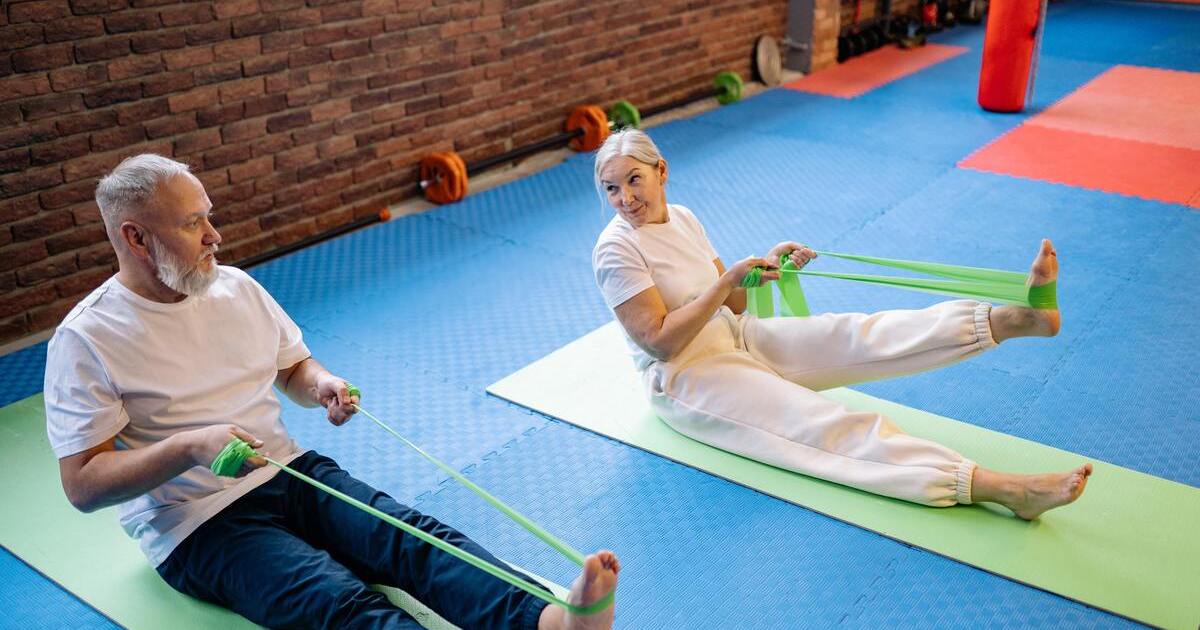
After turning 40, you’ll notice your body changing. You adjust specific routines, maybe add eyewear that helps improve vision or knee wraps during a run to avoid aches. Aging is a process, and exercising regularly can help you do it gracefully. Strengthening bodyweight exercises are especially important as you get into your forties and beyond.
Doctors, physical therapists, or coaches will tell you the idea that “it’s all downward spirals when exercising in middle age” is outdated. However, when your body changes, it’s a good idea to pay attention.
For example, testosterone levels may decrease along with tendon and ligament vascularity. You might also need more recovery time after challenging workouts.
Fight the urge to make huge, dramatic shifts in your exercise routine. Instead, make smaller changes, such as fixing mistakes or overcoming bad habits. Check out these common bodyweight workout errors to avoid.
You don’t work on your flexibility and mobility
As we get older, it’s easy to forget the importance of exercise. We juggle family and work responsibilities, and exercising doesn’t always fit seamlessly into our schedule. During middle age, staying physically fit becomes even more important. Therefore, we have to get up off the couch and work out, even when we don’t want to.
After all, a sedentary lifestyle will hurt you in a variety of ways. Not only will you put yourself at risk for obesity, diabetes, and heart disease, but your joints will also lose their ability to move through a full range of motion. This will cause you to lose flexibility, something you need for even the most routine of daily activities.
Losing flexibility also increases your risk of everyday injury, limits circulation, and negatively affects your standing and sitting postures. Protect your muscles, tendons, and ligaments. Avoid unnecessary surgeries.
Add regenerative exercises like yoga and pilates to your routine so that you’ll maintain flexibility and mobility as you age.

You skip your warm-up and cool-down routines
Getting in shape at 40 means you must warm up before working out and cool down afterward. This is vital, especially as we age, to avoid potential injuries. If you don’t take the time for this basic self-care, you could lose time to bed rest and muscle loss. It’s not worth it.
Warming up and cooling down don’t have to be time-consuming activities. A few stretches or jumping rope will loosen and warm your muscles. This gets them ready for lifting so your stabilizers and connective tissues work more effectively. Light warm-up sets also sync up your mind-muscle connection to make the most of each movement.
Cooling down after a workout removes lactic acid from your body and slowly regulates your heart rate. Again, this doesn’t have to take a lot of time. Incorporating simple stretches, covering important muscles, or a 6 to 7-minute yoga flow could give you the cooldown you need before getting on with your day.
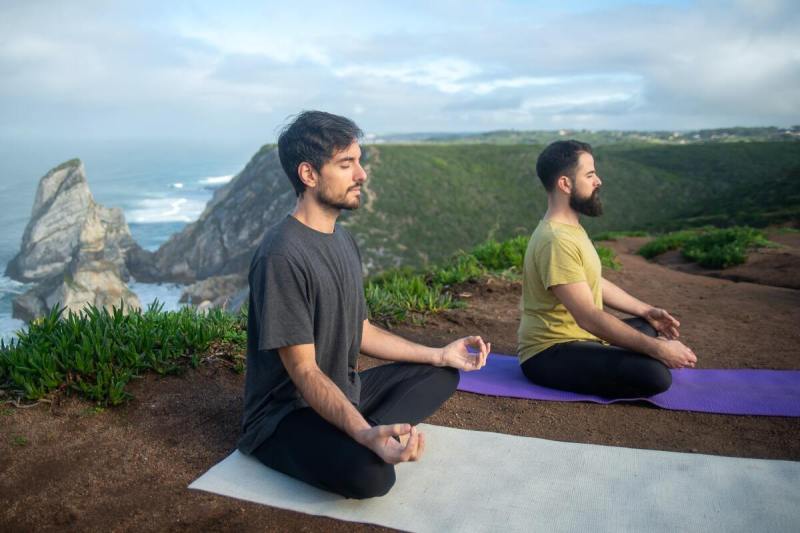
You take it too easy
It’s common to get into your forties and forget to put some intensity into workouts. Don’t fall into the trap of a mundane, ho-hum exercise routine. You may feel the urge to stick with what you know or do the bare minimum. But never challenging yourself comes with a price.
Sticking with the old routine of two to four sets of six to ten reps while placing too much focus on elements like time under tension can lead to muscle deterioration. Don’t miss out on the benefits of one important essential: power training. Add simple exercises like kettlebell swings into your regimen. Include other adjustments, like using more force with bench presses and squats.
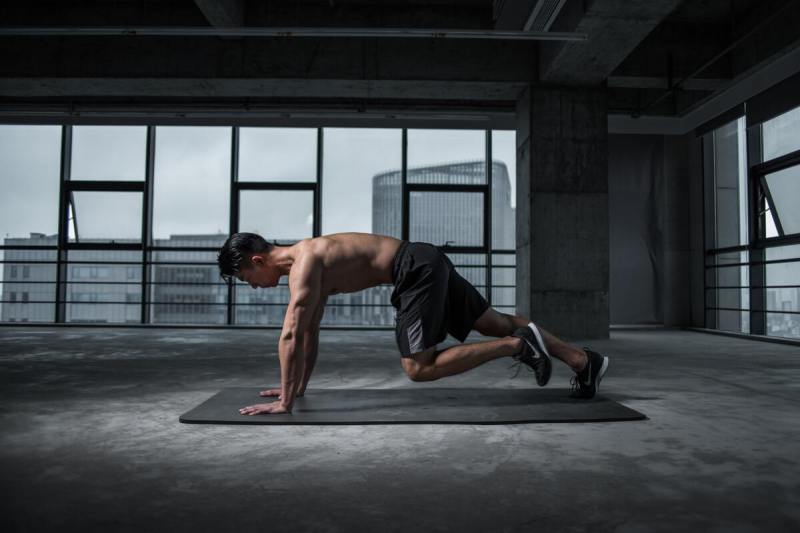
You aren’t consistent
You won’t see improvements or other positive results if you’re not consistent. Think about when you were a bit younger and just starting. You trained with consistent effort and energy. Week after week, you showed up for yourself. And you noticed results.
When you start to miss a workout here or there, you might not think it’s a big deal. You’ll just catch up when you get back at it. But when you reduce your intensity or stop altogether, it gets harder to return to that energy. This is especially true if you’re eating and drinking as if you’re working out when you’ve stopped.
Unfortunately, one lousy week can easily turn into a lousy month. If you don’t hold yourself accountable, it can be difficult to get back to where you used to be. Inconsistencies with the training lead to inconsistencies with nutrition and other areas of life. This is how people lose their way and begin to gain weight and lose muscle in middle age.
You can’t always control external issues and may need to miss a workout. However, you can create alternative plans to minimize the chances of an interruption and, therefore, the effect of it.
Plan social events and workouts so that you can have both without jeopardizing the gains you’ve made in your fitness level.
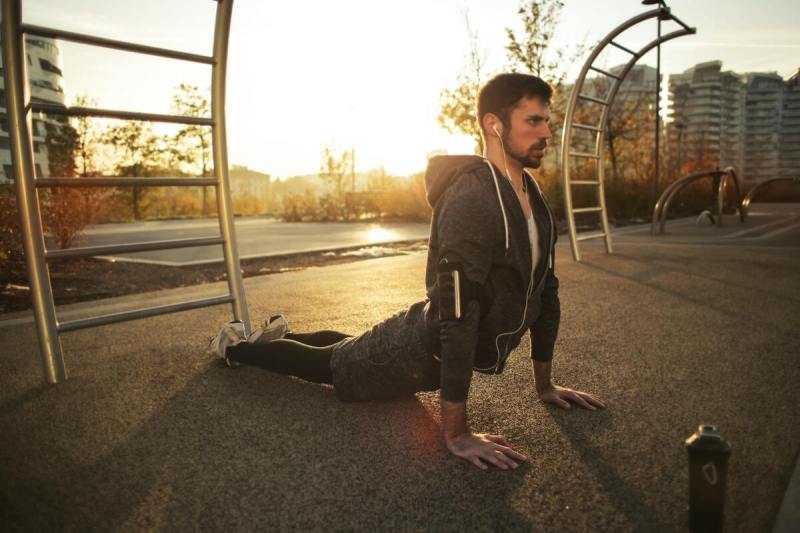
You don’t use modifications
The kinds of workouts that made sense in your 20s won’t make sense anymore in your 40s. If you do try to hold on to one-rep maxes or rounds in the right, you may risk walking away with soreness and injuries. Sometimes you won’t be able to walk away at all.
Instead of clinging to what no longer serves you, use modifications that involve medium-weight, medium-rep exercises. Even better? Incorporate routines with a large range of motion. Such modifications include using the following:
- Kettlebells
- Yoga
- Swimming
- Martial arts
- Barbell exercises
Unfortunately, too many people over 40 skip certain exercises altogether because they think it’s too difficult for their age group. A better choice would be to use modifications that maximize the results and produce exactly the kind of strength and flexibility your older body needs.

You don’t balance your aerobic and anaerobic exercises
When you neglect the cardio and conditioning portion of your workouts, you’ll lose steam pretty fast. You want to increase your longevity, not deplete it. Since metabolism begins slowing down after age 40, you must burn calories in other ways. Discover exercises and routines that elevate your heart rate.
Start slow. Find a way to include up to ten minutes of aerobic activity every day. Include these short but sweet bursts into strength training toward the end of the workout. Do this by jumping on the treadmill or row machine.
Push yourself a little bit more by adding less than a minute of interval training. A long run, ride, or swim will also add important cardio to your workout. Keep it steady and consistent on a weekly basis.
Editors’ Recommendations

Fitness
Fitness face-off – Harvard Health

What’s in style? The question doesn’t just relate to fashion. Indeed, even exercise styles go in and out of vogue, echoing trends fueled by social media and other cultural drivers.
Case in point: high-intensity bursts of exercise have grabbed headlines over the past couple of years, with scientists generating an array of studies examining the health benefits of short spurts of movement lasting from one to three minutes. That might consist of jumping jacks, lunges, running in place, jumping rope, air boxing, running up stairs, or any other high-intensity activity.
Meanwhile, plenty of research continues to focus on the health advantages of moderate-intensity, continuous movement. Mainstay choices for these sessions include brisk walking, cycling, jogging, and elliptical and treadmill use.
Given the swings in popularity between the differently paced alternatives, perhaps the most pressing question is which one is better for us. It might seem certain exercise patterns might prove superior to others, but we should resist the temptation to believe that, says Dr. Meagan Wasfy, a sports cardiologist at Harvard-affiliated Massachusetts General Hospital.
“There are always trends, and each one claims to be the latest and best way to move your body,” Dr. Wasfy says.
Breaking down the data
What health benefits does each approach offer? A sampling of recent studies and official health guidance weighs in.
Evidence supporting exercise bursts includes the following:
- A 2022 analysis of data collected on more than 25,200 people who didn’t otherwise exercise (average age 62, 56% women) published in Nature Medicine found that those who routinely did brief bursts of vigorous activity — defined as three bouts, each lasting a minute or two — had significantly lower odds of dying or developing cardiovascular disease over the following seven years than participants who didn’t.
- A 2023 analysis in JAMA Oncology of more than 22,000 people who didn’t exercise (average age 62, 55% women) suggested that even short, intermittent periods of intense movement — a minute at a time, three or four times a day — was linked with 18% lower cancer risk over the following 6.7 years, especially for cancers of the breast, uterus, or colon.
Evidence supporting longer, moderate-intensity exercise includes the following:
- Adults who do any amount of moderate-to-vigorous exercise derive health benefits, including reducing their risks of cardiovascular disease, diabetes, and some forms of cancer, according to the CDC.
- A 2022 analysis in JAMA Internal Medicine involving 78,000 people (average age 61, 55% women) found their risk of heart disease, cancer, and premature death dropped by 10% over the following seven years for every 2,000 steps they logged each day, with the benefit peaking at 10,000 steps.
Sense a theme from the findings? Regardless of intensity, it’s apparent that any movement is good for your health.
“No one comes out ahead with regards to the long-term outcomes,” Dr. Wasfy says. “What matters most is moving your body and doing more of it. The sum of movement, over the course of a year or decades of your life, is what matters.”
Exercise caveats
One clear advantage to exercise bursts — or its cousin, high-intensity interval training (HIIT) — is that any high-intensity activity enables you to fulfill recommended exercise guidelines in less time. Health organizations advise adults to get at least 150 minutes of moderate exercise or 75 minutes of vigorous exercise (or some equivalent combination of the two) per week. For an HIIT workout, you alternate vigorous, short sprints with brief periods of rest or lower-intensity movement.
“It’s a time-efficient way to get your recommended exercise dose in less time,” Dr. Wasfy says.
High-intensity exercise does pose a few drawbacks, however. These include a greater risk of injuries and inflammation to joints and muscles. Additionally, for people with heart disease or its risk factors, sudden bursts of exercise could be more likely to bring on new cardiac symptoms.
“If you’re writing an exercise prescription not knowing anything about someone’s health history, you’d write it for moderate-intensity, continuous exercise,” Dr. Wasfy says.
If you’d like to increase your exercise intensity but have existing heart disease — or symptoms such as chest pain with vigorous movement — talk to your doctor in advance. Older adults who’ve noticed their ability to exercise has declined should also speak up.
Ultimately, Dr. Wasfy says, you should choose a style of exercise you really like — and will do consistently — and disregard fitness trends. “If you’re healthy,” she says, “it’s really your choice.”
Image: © Luis Alvarez/Getty Images
Fitness
Amitabh Bachchan’s diet and workout routine for staying fit at 82: Pranayam, yoga stretches, gooseberry juice and more

Amitabh Bachchan is a living legend whose popularity surpasses that of his contemporaries. At 82, his unmatched energy and commitment to fitness continue to inspire generations. Despite facing severe health challenges like tuberculosis, his disciplined lifestyle has helped him stand tall and active in the industry. Curious to know the secret behind his fitness? Let’s dive into the insights of Amitabh Bachchan’s diet plan and workout routine. (Also read: Sonu Sood shares his diet and fitness secrets for toned body at 51: ‘I’ve never tasted non-veg and I don’t drink’ )
How Amitabh Bachchan stays fit at 82
Earlier, in an interview with Humans of Bombay, Amitabh Bachchan’s wellness trainer Vrindaa Mehta revealed the actor’s unwavering dedication to fitness. She shared, “If Amitabh Bachchan can make time to exercise, normal people can too. The mindset is, when you know something is good for you, you just do it. It’s not about comfort, it’s not about not having time… If Mr. Bachchan can make time to exercise, regular people can of course, take out time to exercise.”
Talking about his fitness routine, Vrindaa added, “My sessions with Amit ji are more about breath work. We start off with basic breath exercises and move on to pranayams, and basic yoga stretches. Mindset… He’s the father of it all.”
Wellness trainer Shivohaam, who also works with Amitabh, highlighted the actor’s remarkable commitment to fitness. “There are times when we have to tell him, ‘Let’s not train right now, it’s not ideal for you.’ The point is, he does take out the time, whether it’s morning, afternoon, or evening, or even between meetings because he knows it’s important,” shared Shivohaam.
Amitabh Bachchan’s diet secrets
Amitabh Bachchan’s diet revolves around discipline and variety. In one of his blog posts, the veteran actor shared that he begins his day with tulsi leaves, followed by a breakfast featuring items like protein shakes, almonds, porridge, or coconut water. Other favourites include gooseberry juice and dates, providing a power-packed start to his mornings with a mix of healthy nuts and proteins.
When discussing his eating habits, Big B revealed, “In my youth, I would eat, but now I have left eating non-veg dishes, sweet items, rice, and won’t speak any further.” Skipping desserts and limiting sugar intake have been significant lifestyle changes that help him maintain his fitness and avoid risks like obesity.
Fitness
Does exercise offset the risks of sitting? – Harvard Health

The study confirmed again that moderate-to-vigorous physical activity for at least 150 minutes per week does improve your health, particularly your heart health. But the study also was able to show that, among those people who got the recommended amount of moderate-to-vigorous physical activity, those who were the most sedentary the rest of the time had a greater risk of developing heart failure and dying from heart disease, when compared to those who were less sedentary.
As a service to our readers, Harvard Health Publishing provides access to our library of archived content. Please note the date of last review or update on all articles.
No content on this site, regardless of date, should ever be used as a substitute for direct medical advice from your doctor or other qualified clinician.
-
/cdn.vox-cdn.com/uploads/chorus_asset/file/25822586/STK169_ZUCKERBERG_MAGA_STKS491_CVIRGINIA_A.jpg)
/cdn.vox-cdn.com/uploads/chorus_asset/file/25822586/STK169_ZUCKERBERG_MAGA_STKS491_CVIRGINIA_A.jpg) Technology1 week ago
Technology1 week agoMeta is highlighting a splintering global approach to online speech
-

 Science1 week ago
Science1 week agoMetro will offer free rides in L.A. through Sunday due to fires
-
/cdn.vox-cdn.com/uploads/chorus_asset/file/23935558/acastro_STK103__01.jpg)
/cdn.vox-cdn.com/uploads/chorus_asset/file/23935558/acastro_STK103__01.jpg) Technology7 days ago
Technology7 days agoAmazon Prime will shut down its clothing try-on program
-

 News1 week ago
News1 week agoMapping the Damage From the Palisades Fire
-
/cdn.vox-cdn.com/uploads/chorus_asset/file/25826211/lorealcellbioprint.jpg)
/cdn.vox-cdn.com/uploads/chorus_asset/file/25826211/lorealcellbioprint.jpg) Technology7 days ago
Technology7 days agoL’Oréal’s new skincare gadget told me I should try retinol
-
/cdn.vox-cdn.com/uploads/chorus_asset/file/25832751/2192581677.jpg)
/cdn.vox-cdn.com/uploads/chorus_asset/file/25832751/2192581677.jpg) Technology3 days ago
Technology3 days agoSuper Bowl LIX will stream for free on Tubi
-

 Business5 days ago
Business5 days agoWhy TikTok Users Are Downloading ‘Red Note,’ the Chinese App
-
/cdn.vox-cdn.com/uploads/chorus_asset/file/25835602/Switch_DonkeyKongCountryReturnsHD_scrn_19.png)
/cdn.vox-cdn.com/uploads/chorus_asset/file/25835602/Switch_DonkeyKongCountryReturnsHD_scrn_19.png) Technology1 day ago
Technology1 day agoNintendo omits original Donkey Kong Country Returns team from the remaster’s credits


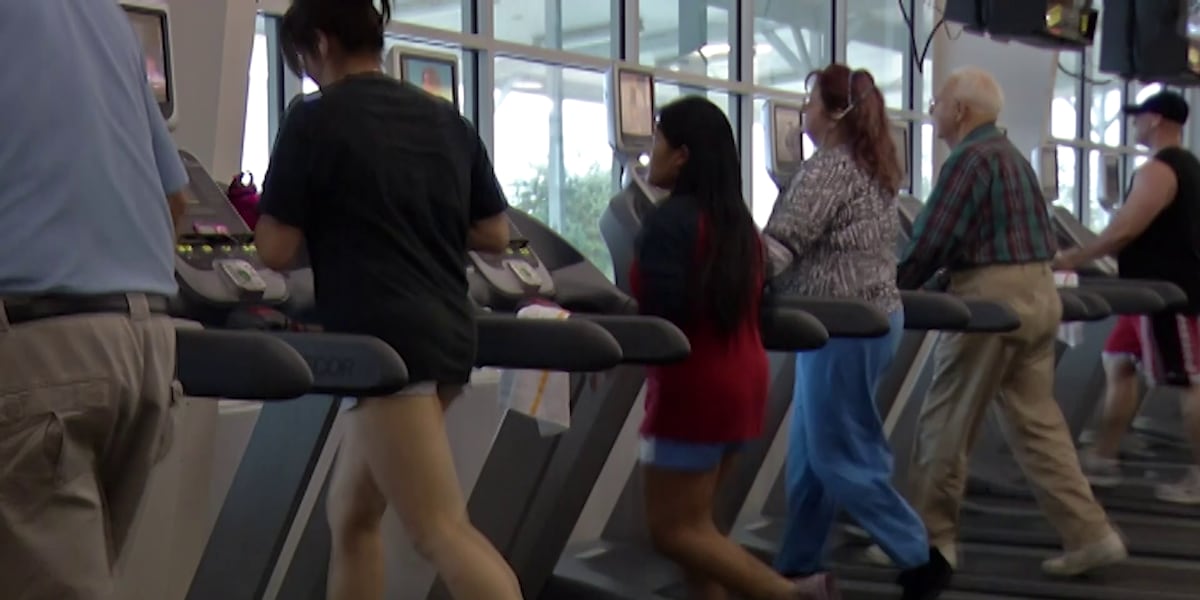






/cdn.vox-cdn.com/uploads/chorus_asset/file/25829977/STK051_TIKTOKBAN_B_CVirginia_C.jpg)









